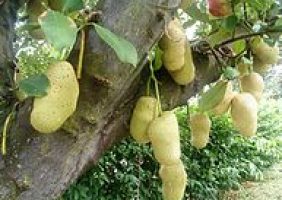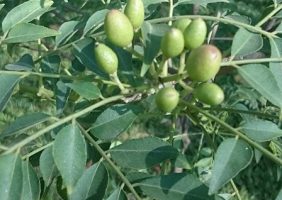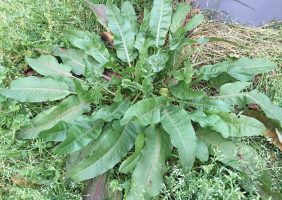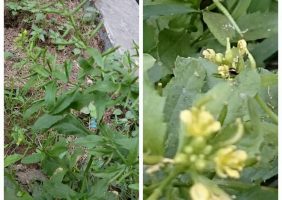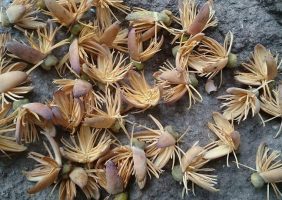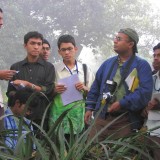Conservation Initiative of Endangered Phayre’s Langur
Conservation Initiative of Endangered Phayre’s Langur (Trachypithecus phayrei)
– In the North Eastern Forests of Bangladesh
Tanvir Ahmed
Research Assistant, Bangladesh Hoolock Gibbon Project,
Department of Zoology, Jagannath University, Dhaka
Member of IUCN Primate Specialist Group,
Section for Human-Primate Interaction
Email : shaikot2023jnu@gmail.com
Background:
There are 10 Species of non-human primates (here after primates) in Bangladesh – one Species of Loris, five Macaques, three Langurs and one lesser Ape (Brandon-Jones et al.2004; IUCN Bangladesh 2015). Primates are the most threatened group of mammals in the country; 90% of them are threatened. Three Species are Critically Endangered while five Species are Endangered nationally (IUCN Bangladesh 2015).
Phayre’s Langur (Trachypithecus phayrei) is a globally “Endangered” primate (Bleisch et al. 2008) which is “Critically Endangered” in Bangladesh (IUCN Bangladesh 2015). It’s distribution is limited to few south and south-east Asian countries – Bangladesh (Sylhet and Chottogram division), China, India, Lao PDR, Myanmar, Thailand and Vietnam. Gettins and Akonda (1982) estimated 1300 individuals of the Species in Bangladesh while Ahsan (1984) reported 1050 individuals. Molur et al. (2003) concluded the existing population is less than 100 that reveals a sharp decline of more than 80% of its population over it’s the last three generations. However, there is no precise estimation of the population abundance available in Bangladesh. Due to lack of such baseline information, conservation of Phayre’s Langur is not effective, although numbers of protected areas harbor their population in the northeast Bangladesh. To initiate Species specific conservation effort for the Phayre’s langur it is highly required to have insights on their current status, habitat and threats affecting their survival. With the financial support by The Rufford Foundation, UK, a survey was carried out since March 2018 to September 2019 in 5 northeastern forests of Bangladesh with the following objectives:
- To assess the population status of Phayre’s Langur in 5 northeastern forests of Bangladesh.
- To assess the threats facing the Langur across the landscape.
- To promote awareness campaign towards biodiversity conservation ensuring active participation of local communities.
- To develop management recommendations for the Species.
Study Sites:
Northeastern forests of Bangladesh (Moulovibazar and Habigonj district) is in Sylhet Hills bio-ecological zone (Nishat et al. 2002) and a part of Indo-Burma biodiversity hotspot (Stanford 1991). Our study sites (Satchari National Park, Lawachara National Park, Rema-Kalenga Wildlife Sanctuary, Rajkandi Reserve forest and Patharia Reserve Forest) bound between N24.07 E91.25 and N24.36 E91.13 bordering two Indian states Tripura and Assam. The forests are semi-evergreen in nature consisting of hill forests, shrubs and mixed bamboo vegetation. Topography of these areas is hilly and ranging from 50 to 300 meter above sea level. Numerous streams and swampy areas criss-cross the region. The areas are surrounded by industrial plantation of tea and rubber or agricultural and rural settlement. As s result, the natural forests of the sites had shrank over the last few decades and become fragmented and patchy. Still a few of the globally endangered Species (e.g. Hoolock Gibbon, Phayre’s Langur, Assam Roofed Turtle, White-rumped Vulture etc.) (IUCN Bangladesh 2015) are supported by the forests indicating their conservation importance.
Methodology:
- Population Survey: Surveys were being carried out in pre-established forest trails, roads and dried streamlines of the forests. A group of 2–5 people walked from approx. 06:00 to 11:00 h and 14:00 to 18:00h with regular short stops to search for the animals. The movement were quiet monitoring a fixed velocity of about 1.5km/h. In detection of Phayre’s Langur, perpendicular distance of the centre of animal group (cluster) in their first detected location were measured from transects (Buckland et al. 2001). Sighting time, GPS co-ordinates, elevation, vegetation type, number of individuals and age-sex composition data were collected.
- Threats and People’s Attitude Survey: Threats to Phayre’s Langur, local people’s forest use and tourist’s activities into the habitats were noted during field observation. Informal personal interviews by were conducted to determine the context of human-monkey conflict and local people’s attitude towards the Langur and other wildlife in the landscape. A few questionnaires in Bangla were prepared for interviewing fringe villagers, former hunters, poachers and the forest stuffs.
- Conservation Initiatives: We arranged community consultation meetings, enlightening school going students towards biodiversity conservation, awareness campaigns and publishing news in popular portals towards sustainable conservation of the Species.
Findings at a glance:
According to complete counting of Phayre’s Langur during distance sampling based population data collection, a total of 376 individuals were recorded belonging to 36 groups in 5 study sites of Northeastern Bangladesh (Figure 1). The mean group size was 10.44 ± 5.37 (4 to 26 individuals). Altogether 47% of all the recorded individuals were adult, of which, 38% were adult males and 62% adult females. Population density following distance sampling base data analysis in each site will be presented later in peer-reviewed articles. About 33% of the recorded population were found in less protected Rajkandi and Patharia Hill Reserve Forest where populations are vulnerable to hunting by local ethnic communities and trading. Moreover, habitat destruction, fragmentation and illegal logging were also found besides unregulated extraction of feeding plants such as Bamboo (Figure 2). Besides, lack of public awareness, poor law implementation, electro-caution and trading for zoos were also recorded affecting population in long term survival.

Figure 1: Phayre’s Langur Population in Northeast Bangladesh

Figure 2: Threats affecting Phayre’s Langur in Northeastern forests
We developed conservation education programs for the local people who are directly or indirectly depends on forests for their livelihood. As an initiative, we focused on building their trusts on project activities, engaging them into awareness campaigns, enriching their understanding of ecosystem services of the forests and the conservation importance of wildlife in their area focusing Phayre’s Langur. Conservation materials were distributed among different communities. We arranged 2 major community consultation programs in Rema-Kalenga Wildlife Sanctuary and Rajkandi Reserve Forest ensuring active participation of local leaders, community people, forest departmental staffs and stakeholders. Our focus was to enlighten the local people about their economic development through primate based eco-tourism development in local scales and encourage them to be trained eco-tourist guide. We helped four local people of different forest sites to develop their skills in this respect. Now they voluntarily collect information of wildlife hunting, trading and other illegal activities into the forests and share with local forest departmental staffs and the project members for necessary steps. In addition, stickers, posters and sponsor logo embedded T-shirts were distributed among forest stuffs, local communities and students.
Conservation Implications:
Ecologically Phayre’s Langur is valuable for the forest regeneration activities through seed dispersals and pollinations. This animal is an important attraction to the tourists; visitors pay the local guides and forest departments to see the animals entering in the protected areas. So, it enables local communities to income generation for their livelihood. But the quick expansion of agricultural activities through lemon gardening, paddy cultivations and monoculture plantation into the protected areas are threatening the Species and other wildlife in the area. Illegal hunting for bush meat and trading for local Zoo have also impacts on the Langur population. This complex situation demands kin attention of Bangladesh Forest Department and NGOs to promote alternative livelihood strategy of local people to decrease their forest dependency. Eagerness of local government and law enforcement authorities can have important steps to maintain the forest’s rules and regulations. Moreover, establishment of more protected areas in Rajkandi and Patharia Hill Reserved forests will be the most important steps. This baseline research findings will help policy makers in decision making and to fix up priorities in conservation of this nationally critically endangered primate.
Conclusion:
Conservation efforts are baffled not to be in the right scale. Besides, success is almost invisible shortly because it requires long term programs. Our initiatives has already stepped forwards making a baseline initiative for sustainable conservation of Phayre’s Langur in Bangladesh. Publishing articles along with management prescriptions are the required further steps to continue. The project members (Md. Sabit Hasan, Shimul Nath, Sajib Biswas and the author) ensure to continue work on the Species collaborating NGOs and resource persons in the field.
Cited Literatures:
- Ahsan, M.F. 1984. Study of primates of Bangladesh: determination of population status and distribution of non-human primates in Bangladesh with emphasis on Rhesus monkey. Unpublished M. Phil thesis. University of Dhaka, Dhaka.
- Brandon-Jones, D., Eudey, A.A., Geissman, T., Groves, C.P., Melnick, D.J., Morales, J.C., Shekelle, M. and Stewart, C.B. 2004. Asian primate classification. International Journal of Primatology 25(1): 97–164.
- Buckland, S.T., Anderson, D.R., Burnham, K.P., Laake, J.L., Borchers, D.L. and Thomas, L. 2001. Introduction to Distance Sampling. Oxford: Oxford University Press.
- Bleisch, B., Brockelman, W., Timmins, R.J., Nadler, T., Thun, S., Das, J.and Yongcheng, L. 2008. Trachypithecus phayrei. The IUCN Red List of Threatened Species 2008.
- Gittins, S.P. and Akonda, A.W. 1982. What Survives in Bangladesh? Oryx 16(03). DOI: 10.1017/S003060530001752x.
- IUCN Bangladesh. 2015. Red List of Bangladesh Volume 2: Mammals. International Union for Conservation of Nature, Bangladesh Country Office, Dhaka, Bangladesh, pp. xvi+232pp.
- Molur, S., Brandon-Jones, D., Dittus, W., Eudey, A., Kumar, A., Singh, M., Feeroz, M.M., Chalise, M., Priya, P. and Walker, S. (eds.). 2003. Status of South Asian Primates: Conservation Assessment and Management Plan (CAMP) Workshop Report, Coimbatore, India.
- Nishat, A., Huq, S.M.I., Barua, S.P., Khan, A.H.M.A.R. and Moniruzzaman, A.S. (Eds). 2002. Bio-ecological Zones of Bangladesh. IUCN Bangladesh Country Office, Bangladesh, Dhaka, xii + 141pp.
- Stanford, C.B. 1991. The Capped Langur in Bangladesh: Behavioral ecology and reproductive tactics. Contribution to Primatology. Vol. 26. Basel: S. Karger.
N.B. – Tanvir Ahmed is passionate to primate ecology and conservation. During undergraduate and Master’s degree at Dept. of Zoology, Jagannath Univ., he was involved in studies on Rhesus Macaque, Pig-tailed Macaque and Bengal Slow Loris. At present, he is leading the Phayre’s Langur project, as well as assisting studies on population, ecology and conservation of Western Hoolock Gibbon in Bangladesh.













































